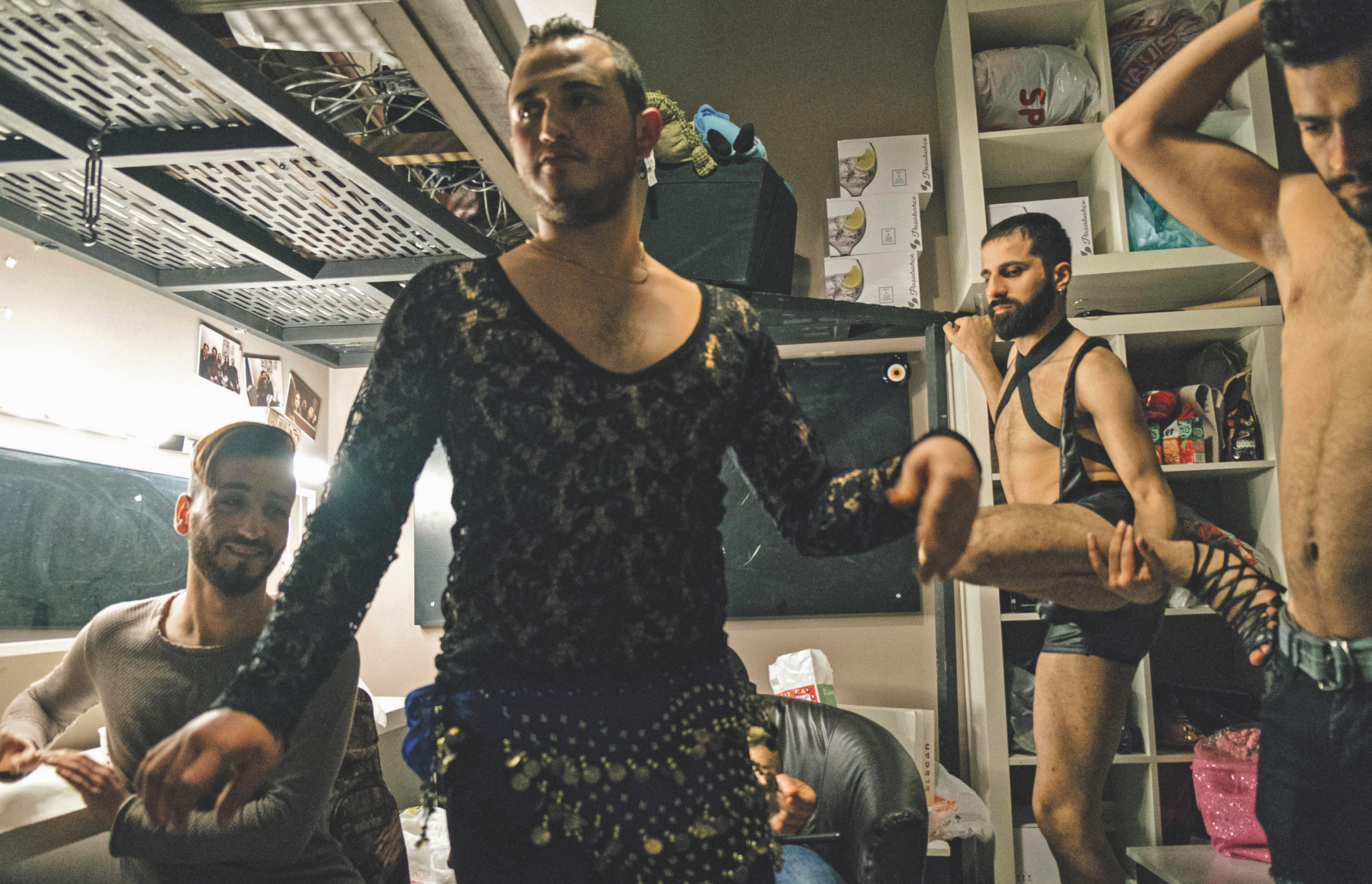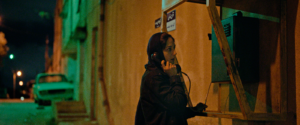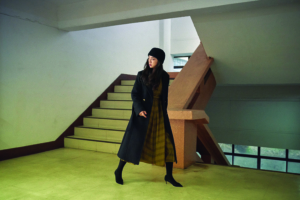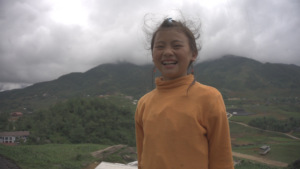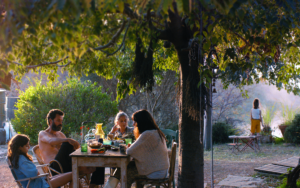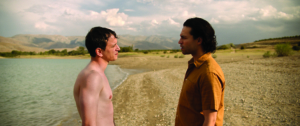Since 2009, the annual Mr Gay World competition has been celebrating the diverse experiences of gay men around the globe. In order to be successful, entrants must first prove their chops by winning their respective national titles before progressing to the international stages of the contest. There, the unsurprisingly handsome entrants pose – with bare chests on display – for their official photographs. But, beyond the allure of sexy men preening themselves for a gay-male gaze, there is a professed political impetus here, too: according to the competition website, the organisers want to raise awareness that ‘in many regions on our planet being gay is a challenge and a fight for basic human rights’.[1]‘History’, Mr Gay World website, <http://www.mrgayworld.com/about-us/history/>, accessed 21 May 2018.
Human rights were certainly foregrounded in 2016 when one delegate was notably absent. Husein Sabat was the first refugee to be given a national crown; as Mr Gay Syria, he was all set to ignite a defiant spark of representation for the Syrian LGBTQIA+ community. However, his refugee status proved troublesome, his visa application was rejected and he couldn’t travel to Malta to compete with the other national winners.[2]See Kate Springer, ‘Mr Gay Syria: Film Documents Lives of LGBTI Syrian Refugees’, CNN, 29 June 2017, <https://edition.cnn.com/style/article/ime-mr-gay-syria-documentary/index.html>, accessed 21 May 2018. Deprived of agency both as a gay man and as a refugee, he faced a very particular predicament that illustrates the broader sociopolitical bind suffered by LGBTQIA+ refugees.

The weight of intersectional discrimination bears down on the subjects of writer/director Ayse Toprak’s Mr Gay Syria (2017). The documentary presents a snapshot of a hidden community, one that is usually subsumed by the homogenised, negative representation of refugees in general and of Syrian refugees in particular. The concept of ‘intersectionality’ – which refers to ‘the complex, cumultive way in which the effects of multiple forms of discrimination (such as racism, sexism, and classism) combine, overlap, or intersect especially in the experiences of marginalized individuals or groups’[3]‘Intersectionality’, Merriam-Webster, <https://www.merriam-webster.com/dictionary/intersectionality>, accessed 21 May 2018. – has become an academic and political buzzword, particularly as it pertains to feminist doctrine. But Mr Gay Syria places it front and centre, in a context that is usually left undocumented. Toprak uses the inaugural Mr Gay Syria competition as a narrative framework to encapsulate the precarious existence of her subjects, along with the competing tensions and uncertainties they are forced to contend with. During the week, Sabat works as a barber in Istanbul while his wife and baby daughter live with his conservative family on the outskirts of the city. This type of ‘double life’ is common for gay Syrians, who must prioritise family duty over their own identity and happiness. Indeed, Toprak received many messages of support from Arab viewers of her documentary whose personal experiences mirror Sabat’s.[4]Springer, op. cit.
One of the film’s subjects, Mahmoud Hassino, is a gay Syrian who agitates for LGBTQIA+ rights and has secured residence in the far more progressive city of Berlin. He is all-too-painfully aware of the identity struggles that his counterparts in Turkey are forced to navigate; in many cases, remaining closeted is not a choice but a question of survival. Homophobic attacks are becoming more common in Turkey as political instability and a rise in nationalism create a swing to the far right; in 2016, a gay Syrian refugee was found beheaded as a result of a homophobic hate crime.[5]Patrick Kingsley, ‘Flatmates of Gay Syrian Refugee Beheaded in Turkey Fear They Will Be Next’, The Guardian, 7 August 2016, <https://www.theguardian.com/world/2016/aug/07/flatmates-of-gay-syrian-refugee-beheaded-in-turkey-fear-they-will-be-next>, accessed 21 May 2018. During that same period, Toprak says, ‘two gay Syrians were killed at their jobs’.[6]Ayse Toprak, quoted in Andrew Taylor, ‘Antenna Film Festival: Mr Gay Syria Highlights Plight of Gay Syrian Refugees’, The Sydney Morning Herald, 17 September 2017, <https://www.smh.com.au/entertainment/antenna-film-festival-mr-gay-syria-highlights-plight-of-gay-syrian-refugees-20170915-gyi3hx.html>, accessed 21 May 2018. This explains why Istanbul’s monthly ‘Tea and Talk’ social meet-ups are so well attended: it is in these contexts that men like Sabat feel accepted and safe, if at least temporarily. Mr Gay Syria takes us inside these meetings, where Hassino discusses his vision for a Syrian Mr Gay World contest. The men are cautiously excited at the prospect of international visibility. They hope that the competition will give them a much-needed profile and start to bring about positive change. For most, the long-term objective is permanent resettlement in a tolerant country. If the world can see that they exist, and that they have no intention of giving up on life, then greater advocacy must eventually follow.
The men are cautiously excited at the prospect of international visibility … If the world can see that they exist, and that they have no intention of giving up on life, then greater advocacy must eventually follow.
Mr Gay Syria presents several emblematic moments that cut across stereotypical depictions of ‘refugee’ and ‘persecuted homosexual’. Perhaps what makes these moments so moving is the everyday-ness of their expression, the humanity at the heart of so much pain and the courageous drive for a stable future despite the potential costs. When Sabat is interviewed about his motivation for participating in the contest, he is asked, ‘Is it courage or despair?’ His response is symptomatic of the plight of the various refugees we meet in the film:
Let’s say despair leading to courage […] When you have problems and you’re desperate, you have to take action or nothing will change for you. It’s like wearing a mask since you were born – you have to take it off at some point. If you don’t, you’ve missed your chance; you’ll despair forever.
Sabat doesn’t separate the political from the personal. Above all, he seeks self-determination for his own life and identity. He wants to move forward into a future of his own deliberation. For the refugees who come together to be a part of Mr Gay Syria, there is a shared act of defiance, a brief sense of solidarity with the LGBTQIA+ world beyond their ravaged homeland; there is laughter and there is hope.
The urgency of movement and transition is built into the refugee experience. An astonishing number of Syrians have had to flee their homes: as of March 2018, at least 6.1 million are internally displaced, while 5.6 million are registered as refugees.[7]‘Why Is There a War in Syria?’, BBC News, 15 March 2018, <http://www.bbc.com/news/world-middle-east-35806229>, accessed 21 May 2018. The Office of the United Nations High Commissioner for Refugees (UNHCR) estimates that 1900 LGBT refugees are located in Turkey.[8]Taylor, op. cit. It’s probably not that surprising, then, that here in the West we are accustomed to images that promulgate the victimisation of Syrian refugees, and there is a tendency to associate them purely with civil war, displacement and bloodshed. But the film offers us a more optimistic view by homing in on the minutiae of the refugees’ day-to-day experiences. The banter and camaraderie of Mr Gay Syria’s subjects – who are among the most vulnerable groups of people on the planet – belie the reality that they have to grapple with endless question marks: access to housing, jobs and social support networks are all problematic for LGBTQIA+ refugees.
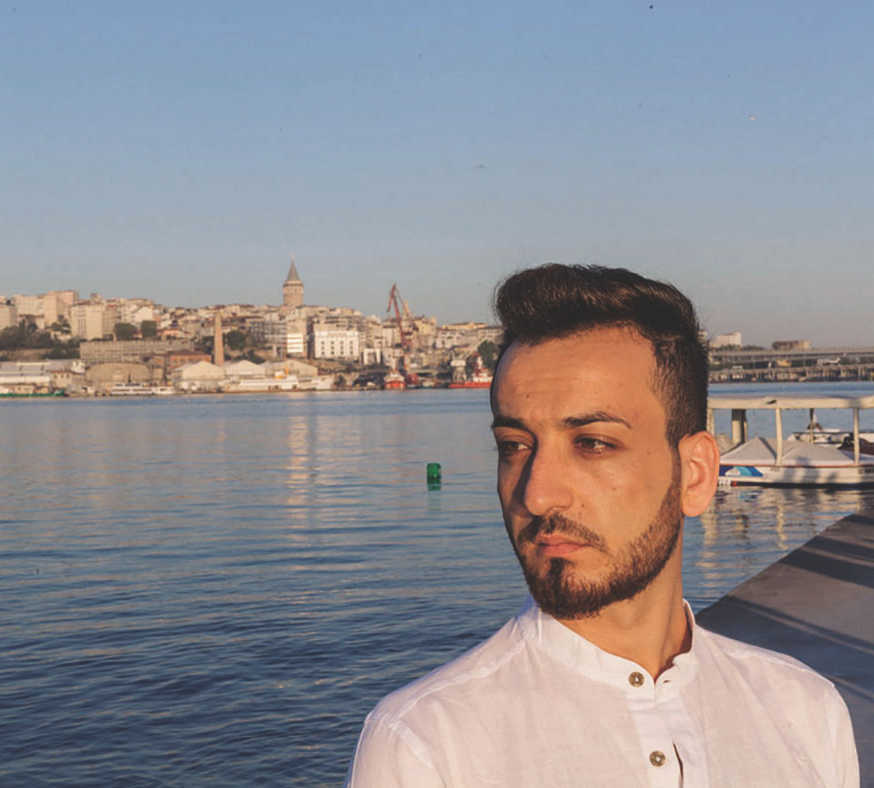
The varied situations of the depicted refugees notwithstanding, their desire to stake out their own, rightful space is a shared goal. Nader and Omar’s story, in particular, offers a hopeful counterpoint to the faceless bureaucracy that pins down each of the protagonists. Their happy relationship endures through a climate of almost-unimaginable uncertainty; the images of their domestic life are central to Mr Gay Syria’s successful humanising of the figure of the refugee. We watch as Nader is granted residence in Norway and Omar anxiously waits for his visa to be approved. They hope to be able to begin a stable life together. The couple are separated for Nader’s birthday, so Omar presents him with a slice of birthday cake via Skype. Toprak and cinematographer Hajo Schomerus shoot the pair’s incredibly sweet conversation with a breezy, informal camera movement that recalls a home movie. In anchoring the couple’s disrupted relationship in familiar aesthetics, the filmmakers help the audience sympathise with these men: they are embattled individuals who are refusing to capitulate to despair.
Such insightful portrayals of gay Syrians drive the film and work in tandem with Hassino’s quest to create positive visibility for the community. In the film’s opening act, he explains the reasoning behind sending a Syrian entrant to Mr Gay World: ‘The only image of gay Syrians is given by ISIS. How can we change that perception [that] gay Syrians are only those killed in the ISIS videos[?]’ But, if Nader and Omar exemplify the ‘happy ending’ (spoiler alert: Omar gets that visa), Sabat personifies the complexities of inhabiting a politically fraught intersectional space. His is a confronting coming-out story, as he is forced to admit his double life to his family and separate from his wife and daughter. Like Sabat, his wife is trapped in a difficult web of identity, sexuality, family, religion and displacement. She remains nameless and her face is never shown; hers is a story for another film, but, here, she hovers on the peripheries (of the city, of the narrative). As the wife of a gay man, her own safety is not secure.
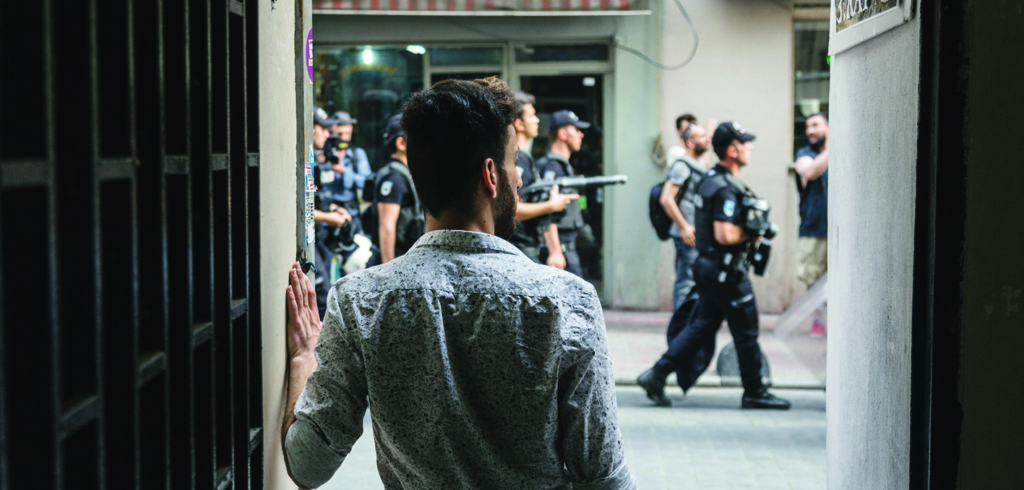
Homosexuality is a criminal offence in Syria, and the civil war has increased the level of persecution for LGBTQIA+ Syrians. Gay men are targeted by militant groups including ISIS (beheadings, torture, being thrown from rooftops and stonings have been documented); they are also at risk of ‘honour killings’ for shaming their families, arrest and imprisonment.[9]Michelle Nichols, ‘Islamic State Throws Gay People off High Buildings, UN to Hear’, The Sydney Morning Herald, 14 August 2015, <https://www.smh.com.au/world/islamic-state-throws-gay-people-off-high-buildings-un-to-hear-20150814-giyu0t.html>; Dan McDougall, ‘“It Can’t Get Any Worse than Being Gay in Syria Today”’, The Sydney Morning Herald, 15 October 2015, <https://www.smh.com.au/lifestyle/it-cant-get-any-worse-than-being-gay-in-syria-today-20151001-gjze4o.html>, both accessed 21 May 2018. The various religious and military factions involved in the conflict have magnified the danger for LGBTQIA+ Syrians; as one gay refugee explains:
The attitude now if you are gay and trapped inside [Syria] is, ‘Trust nobody’ […] Not your mother, nor your closest friend. The only difference between all the factions is that some will torture you before they kill you if you are outed and caught. [10]‘Elmo’, quoted in McDougall, ibid.
Moreover, Mr Gay Syria shows us that the problems faced by LGBTQIA+ refugees don’t necessarily end after they have left their homelands. Displaced by war and rejected by their own culture, gay Syrians like Sabat often find themselves facing further discrimination as well as daily lives racked with instability in their temporary new homes. Under Turkish law, for instance, Syrian refugees are prohibited from applying for permanent resettlement. Instead, they must make do with a ‘temporary protection’ visa until they have successfully obtained permanent asylum elsewhere. Stigmatisation also remains a broader issue in Turkey, with 85 per cent of Turkish people reporting that they would prefer not to have a homosexual neighbour.[11]World Values Survey, ‘World Values Survey (2010–2014)’, 2014, p. 74, available at <http://www.worldvaluessurvey.org/WVSDocumentationWV6.jsp>, accessed 21 May 2018. And, in 2017, Istanbul’s gay-pride march was cancelled for the third consecutive year – formerly a beacon for the LGBTQIA+ community and attended by up to 100,000 people, the event was shut down due to ostensible safety concerns.[12]‘Turkish Authorities Ban Istanbul Pride for Third Year in a Row on Day Before March’, ABC News, 25 June 2017, <http://www.abc.net.au/news/2017-06-25/istanbul-pride-march-banned-for-third-year-in-a-row/8649618>, accessed 21 May 2018.
The social conservatism prevalent in Turkey and the issues of safety for LGBTQIA+ refugees present a compelling reason for Mr Gay Syria to reach as wide an audience as possible. Toprak wants the film to demonstrate that ‘we can fight for specific rights in the name of larger conflicts’:
In terms of the refugee crisis, we are showing a community that has never been explored before, and perhaps that’s because LGBTI issues seem like less of a crisis, or a smaller scale, than the overall Syria situation. But you can’t value one human right over another.[13]Ayse Toprak, quoted in Springer, op. cit.
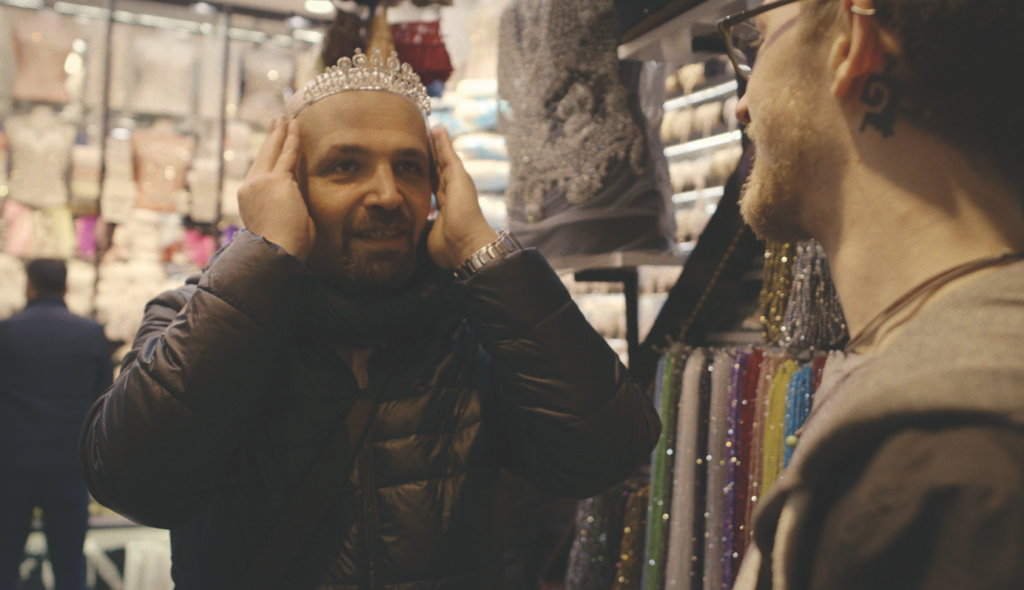
Without a doubt, Mr Gay Syria is insightful and moving. Shown at numerous film festivals and currently screening (in abridged form) in Australia on SBS On Demand, the film continues to challenge viewers to look beyond the mainstream media’s archetypal Syrian refugee to see a self-supporting community that desires, dreams and defies stereotypes.
Endnotes
| 1 | ‘History’, Mr Gay World website, <http://www.mrgayworld.com/about-us/history/>, accessed 21 May 2018. |
|---|---|
| 2 | See Kate Springer, ‘Mr Gay Syria: Film Documents Lives of LGBTI Syrian Refugees’, CNN, 29 June 2017, <https://edition.cnn.com/style/article/ime-mr-gay-syria-documentary/index.html>, accessed 21 May 2018. |
| 3 | ‘Intersectionality’, Merriam-Webster, <https://www.merriam-webster.com/dictionary/intersectionality>, accessed 21 May 2018. |
| 4 | Springer, op. cit. |
| 5 | Patrick Kingsley, ‘Flatmates of Gay Syrian Refugee Beheaded in Turkey Fear They Will Be Next’, The Guardian, 7 August 2016, <https://www.theguardian.com/world/2016/aug/07/flatmates-of-gay-syrian-refugee-beheaded-in-turkey-fear-they-will-be-next>, accessed 21 May 2018. |
| 6 | Ayse Toprak, quoted in Andrew Taylor, ‘Antenna Film Festival: Mr Gay Syria Highlights Plight of Gay Syrian Refugees’, The Sydney Morning Herald, 17 September 2017, <https://www.smh.com.au/entertainment/antenna-film-festival-mr-gay-syria-highlights-plight-of-gay-syrian-refugees-20170915-gyi3hx.html>, accessed 21 May 2018. |
| 7 | ‘Why Is There a War in Syria?’, BBC News, 15 March 2018, <http://www.bbc.com/news/world-middle-east-35806229>, accessed 21 May 2018. |
| 8 | Taylor, op. cit. |
| 9 | Michelle Nichols, ‘Islamic State Throws Gay People off High Buildings, UN to Hear’, The Sydney Morning Herald, 14 August 2015, <https://www.smh.com.au/world/islamic-state-throws-gay-people-off-high-buildings-un-to-hear-20150814-giyu0t.html>; Dan McDougall, ‘“It Can’t Get Any Worse than Being Gay in Syria Today”’, The Sydney Morning Herald, 15 October 2015, <https://www.smh.com.au/lifestyle/it-cant-get-any-worse-than-being-gay-in-syria-today-20151001-gjze4o.html>, both accessed 21 May 2018. |
| 10 | ‘Elmo’, quoted in McDougall, ibid. |
| 11 | World Values Survey, ‘World Values Survey (2010–2014)’, 2014, p. 74, available at <http://www.worldvaluessurvey.org/WVSDocumentationWV6.jsp>, accessed 21 May 2018. |
| 12 | ‘Turkish Authorities Ban Istanbul Pride for Third Year in a Row on Day Before March’, ABC News, 25 June 2017, <http://www.abc.net.au/news/2017-06-25/istanbul-pride-march-banned-for-third-year-in-a-row/8649618>, accessed 21 May 2018. |
| 13 | Ayse Toprak, quoted in Springer, op. cit. |
